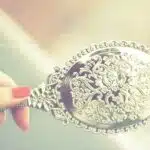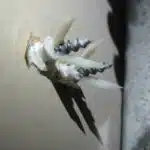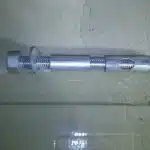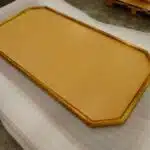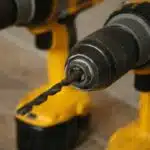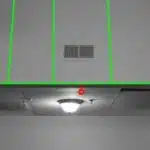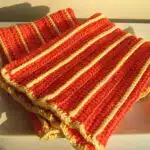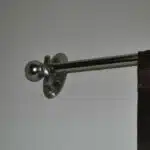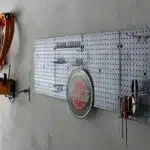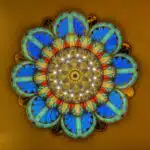Hanging a heavy mirror can be a daunting task that requires precision, skill, and the right tools. It is not uncommon to feel overwhelmed by the prospect of drilling into walls or mounting a heavy object in a way that ensures it stays secure over time. However, with the right approach and guidance, it is possible to hang a heavy mirror safely and easily.
In this article, we will provide you with step-by-step instructions on how to hang a heavy mirror. We will cover all aspects of the process, from selecting the appropriate hardware to positioning the mirror correctly. Whether you are looking to decorate your home or office space or just need to get something off your to-do list, this guide will equip you with the knowledge and skills needed to hang a heavy mirror like a pro. So let’s get started!
Assessing The Weight And Size Of Your Mirror
Mirror hanging is a task that requires careful consideration of the weight and size of the mirror. Choosing hardware appropriate for the job is crucial to ensuring the safety of everyone in the room. Before starting, it’s essential to measure your mirror’s dimensions and weigh it accurately using a scale.
Handling mirrors can be tricky, especially if they are bulky or heavy. It’s advisable to have a helper on hand to assist you with supporting the mirror while you take measurements and attach hardware. Be sure to wear gloves when handling mirrors to avoid leaving fingerprints or smudges on them.
When choosing hardware, consider the weight of your mirror and choose hangers capable of supporting its weight. Heavy-duty wall anchors designed for mounting large mirrors will ensure that your installation remains secure and stable over time. Once you’ve selected your hardware, you’re ready to move onto determining the placement of your mirror without worrying about any safety concerns.
Determining The Placement Of Your Mirror
Mirror Placement: Art or Science?
Finding the perfect spot for your heavy mirror may seem like an easy task, but it requires a certain level of consideration and expertise. Mirror placement is a topic that has been debated for years: is it more of an art or science? Some argue that it’s all about personal preference and style, while others believe that there are specific rules to follow to ensure proper placement.
Regardless of which side you lean towards, there are some general guidelines that can help you determine the best spot for your heavy mirror. Firstly, consider the purpose of the mirror. Is it purely functional or does it serve as a decorative piece? This will influence where and how you hang it. Secondly, think about the room’s lighting and how it reflects off surfaces. You want to avoid placing the mirror in direct sunlight or directly across from a window that’s prone to glare.
To create an image in your mind, imagine a grand hallway with high ceilings and bold artwork lining the walls. In this hallway is a large ornate mirror hanging above a marble console table. The reflection in the mirror captures not only the beauty of the artwork but also bounces light around the space, creating depth and warmth within the room.
Determining where to place your heavy mirror isn’t just about finding an empty wall – it’s about creating balance within your space while also highlighting key features. With these tips in mind, you’ll be able to find a perfect spot for your heavy mirror that both elevates its aesthetic purpose and serves its functional use.
As you start preparing your tools and materials for hanging your heavy mirror, keep these placement tips in mind so that when you finally hang up this beautiful piece, you’ll know it’s in just the right spot to make an impact on anyone who enters your space.
Preparing Your Tools And Materials
- Accurately measuring your wall space and mirror size is essential for a safe and successful installation. A measuring tape is the best tool for this task.
- To hang a heavy mirror, you will need sturdy screws and wall anchors that are appropriate for the wall material you are working with.
- A drill, drill bit, and screwdriver are necessary for drilling holes and inserting screws. A hammer and screwdriver bit might also be needed for the wall anchors.
- A level and pencil are required for marking the mounting points of the mirror with precision.
- A stud finder is an important tool to locate the wall studs and determine the appropriate length of screws.
- Safety glasses are essential for protection while drilling and hammering.
Measuring Tape
Using a measuring tape is essential when hanging a heavy mirror. It allows you to accurately measure the distance between the two supports that will hold up the mirror. Before you start measuring, make sure to have a sturdy ladder or step stool nearby so you can reach the desired height.
When measuring for a heavy mirror, it’s important to take into account its weight and size. First, determine where you want to place the mirror and mark that spot on the wall using a pencil. Then, measure the height and width of the mirror and divide those measurements by two. Mark those halfway points on either side of your initial pencil mark on the wall.
Next, use a level to ensure that your markings are straight and even. Then, measure from the floor up to each marking point with your measuring tape. Make sure both measurements are identical before proceeding with installing your hardware. By taking these steps in measuring for hanging a heavy mirror, you’ll ensure that it’s securely mounted and won’t fall off over time.
Screws
When it comes to preparing your tools and materials for hanging a heavy mirror, it’s important to have the right screws for the job. There are different types of screws that can be used, such as wood screws or masonry screws, depending on the type of wall you’ll be mounting the mirror on. It’s crucial to choose the appropriate screw for your wall material to ensure that it will hold up over time.
Another factor to consider is the proper size of screwdriver needed to install the screws. Using a screwdriver that is too small or too large can damage the screw head and make it difficult to properly secure. To determine the correct size, match the screw head with a corresponding screwdriver tip. This will allow for a smooth installation process and ensure that the screws are securely fastened.
Before installing any screws, it’s important to double-check your measurements and make sure they are accurate. This includes ensuring that your markings on the wall are straight and even, as well as confirming that both measuring points are identical in distance from the floor. By taking these steps and using appropriate types of screws with proper screwdriver sizes, you’ll be well-prepared for hanging a heavy mirror and ensuring its stability on your wall.
Drill
Preparing your tools and materials for hanging a heavy mirror involves more than just having the right screws and screwdriver. You may also need to use a drill to create pilot holes, especially if you are mounting the mirror on a hard surface like concrete or brick. Using a drill can make the installation process easier and faster, but it’s important to use it correctly to avoid common mistakes that can compromise the stability of your mirror.
When using a drill for hanging a heavy mirror, one of the most important things to keep in mind is to choose the appropriate bit size for your screws. This will ensure that the pilot holes are not too small or too large, which can weaken the wall and cause the mirror to fall. It’s also crucial to hold the drill straight and perpendicular to the wall while drilling, as tilting it at an angle can cause the screw to loosen over time.
Another common mistake when using a drill for hanging a heavy mirror is over-tightening the screws. While it may seem logical to tighten them as much as possible for added security, doing so can actually damage both the screw and the wall. Instead, tighten them just enough so that they are snug but not overly tight. By taking these precautions when using a drill for hanging a heavy mirror, you’ll be able to ensure its stability on your wall for years to come.
Choosing The Right Hardware
After preparing your tools and materials, it’s time to choose the right hardware for hanging your heavy mirror. This step is crucial in ensuring that your mirror stays securely on the wall without any risk of falling down. The first thing you need to consider is the weight distribution of your mirror. Knowing this information will help you determine what type of anchor and screw to use.
There are different types of anchors available in the market, each designed for specific applications. For instance, plastic anchors are ideal for lightweight mirrors while toggle bolts are perfect for heavier ones. You may also opt for a molly bolt if you’re hanging a mirror with a wire hanger or D-rings attached to its back. It’s essential to choose an anchor that can support the weight of your mirror without damaging your wall.
After selecting the appropriate anchor, it’s time to measure and mark the wall where you’ll be placing your heavy mirror. Measuring helps you ensure that your mirror is level while marking ensures that you know where to attach the screws or hooks. Use a tape measure and a pencil to mark both ends of where the mirror will go so that it hangs straightly. Take note that measuring and marking accurately is vital as even slight deviations can affect how well your heavy mirror hangs on the wall.
Measuring And Marking The Wall
Using a level, selecting anchors, measuring tape options, and marking tools are crucial steps when hanging a heavy mirror. Before drilling any holes, it is important to ensure that the mirror is level. This can be done by using a level to check if the mirror’s sides are straight or if adjustments need to be made. Once the correct position has been determined, mark the spot where the top of the mirror will be so that it does not shift while you prepare to drill.
The next step is selecting appropriate anchors for your wall type. Depending on whether you have drywall or concrete walls, different types of anchors may be required. It is important to select an anchor that can support the weight of your mirror and secure it firmly in place. Using a stud finder can also help locate studs in the wall for added stability.
Lastly, measuring tape options and marking tools are necessary for accurately marking where holes should be drilled for your chosen anchors. A pencil or marker can be used to make these marks on your wall. Double-check all measurements before drilling any holes to ensure that they align with your desired placement.
With these steps completed, you are now ready to move onto drilling holes for screws in order to securely hang your heavy mirror in place.
Drilling Holes For The Screws
So, you’ve decided to hang a heavy mirror on your wall. Great! Now comes the fun part: drilling holes for the screws. Just kidding, we all know that drilling can be a bit intimidating, especially if you’re new to DIY projects. But fear not, with the right tools and safety measures in place, it’s actually quite simple.
Choosing the right drill is essential for this task. You’ll want a drill that is powerful enough to get through your wall but not so powerful that it creates unnecessary damage. A corded drill or a cordless drill with sufficient battery life will work well. Additionally, make sure you have the appropriate size of drill bit for your screws; otherwise, your screws may not fit correctly.
Using proper safety measures is crucial when drilling holes into walls. First and foremost, wear protective goggles and gloves to avoid any debris or dust from getting into your eyes or onto your skin. Also, ensure that you’re using a level to mark where you want to drill so that everything lines up properly. Lastly, double-check what’s behind the wall before drilling to avoid hitting any electrical wires or plumbing pipes.
Now that you’ve chosen the right drill and taken necessary safety measures let’s move on to inserting anchors into the wall for added stability and support.
Inserting Anchors Into The Wall
When hanging a heavy mirror, it is important to choose the right anchor that is appropriate for the weight of the mirror.Different wall materials may require different anchors and anchoring techniques, so it is important to be aware of the wall material before beginning. Inserting the anchor into the wall requires precision and accuracy to ensure the mirror is secure and safe. It is also important to use the correct tools to ensure the anchor is inserted correctly.
Choosing The Right Anchor
When it comes to hanging a heavy mirror, choosing the right anchor is crucial in ensuring that the mirror stays securely on the wall. There are several types of anchors available on the market, each with its own level of strength and weight capacity. Some popular types of anchors include toggle bolts, expansion anchors, and molly bolts. When selecting an anchor, it’s important to consider the weight distribution of the mirror as well as the type of material that the wall is made of.
Toggle bolts are a great option for hanging heavy mirrors because they can hold a lot of weight and distribute it evenly across the wall. These anchors consist of a long bolt that expands behind the wall once it is inserted into place. Expansion anchors are another strong option that work well in concrete or brick walls. They expand once they are inserted into the wall, providing a secure hold for heavier items. Molly bolts are typically used in drywall and provide a sturdy hold for lighter items.
When deciding which anchor to use for your heavy mirror, it’s important to take into account how much weight will be distributed across each anchor point. If your mirror has multiple hanging points, be sure to select an anchor that can support the combined weight at each point without compromising its strength or stability. Additionally, consider using multiple anchors spaced evenly apart to distribute weight more evenly across the wall surface. By carefully selecting and inserting appropriate anchors into your wall, you can ensure that your heavy mirror will stay securely in place for years to come.
Inserting The Anchor Into The Wall
After deciding which types of anchors to use for hanging a heavy mirror, the next step is inserting them into the wall. Before doing so, it’s important to prepare the wall surface by cleaning it and removing any debris or dust. This will ensure that the anchor can be inserted properly and securely.
To insert the anchor into the wall, first mark where you want to place it with a pencil. Then, using a power drill or screwdriver, create a hole in the wall that is slightly smaller than the diameter of the anchor. It’s important not to make the hole too large as this can compromise its strength and stability.
Once you have created the hole, gently insert the anchor into it until it is flush with the wall surface. If you are using a toggle bolt or expansion anchor, be sure to follow any specific instructions provided by the manufacturer regarding how far to insert it into the wall. Repeat this process for each anchor point, ensuring that they are evenly spaced apart and able to distribute weight across multiple points on the mirror. By following these steps carefully, you can ensure that your heavy mirror will be securely anchored to your wall for years to come.
Attaching The D-Rings Or Wire To The Back Of The Mirror
When it comes to hanging a heavy mirror, attaching D-rings or wire is an essential process. D-rings are small metal rings that can be screwed onto the back of the mirror, while wire is a flexible metal cord that is attached to either side of the frame. There are different types of D-rings available in the market, such as single-hole and double-hole D-rings. Single-hole D-rings are suitable for smaller mirrors, while double-hole D-rings provide more stability and support for larger mirrors.
Proper alignment is crucial when attaching D-rings or wire onto the back of the mirror. The placement of these components will determine how level and secure your mirror will hang on the wall. It’s recommended to use a measuring tool, such as a level or ruler, to ensure accurate placement. Additionally, make sure that you attach both D-rings or wire at equal distances from each other and on either side of the center point.
In summary, attaching D-rings or wire to your heavy mirror provides stability and security when hanging it on a wall. Choosing the right type of D-ring depends on your mirror’s size and weight, while proper alignment ensures that your mirror hangs evenly and securely. Once you have successfully attached the hardware onto the back of your mirror, it’s time to move on to installing mounting hardware onto your wall for safe and sturdy hanging.
Installing The Mounting Hardware Onto The Wall
Before hanging a heavy mirror, it is essential to choose the correct mounting hardware suitable for your wall type. There are various types of mounts available in the market, such as toggle bolts, molly bolts, and heavy-duty anchors. The toggle bolts are ideal for drywall, while molly bolts are perfect for plaster walls. Heavy-duty anchors work well with concrete walls. It is crucial to select a mounting option based on your wall type for maximum stability.
Weight limitations play an important role when selecting mounting hardware for a heavy mirror. The weight capacity of the mounting hardware should exceed the weight of your mirror to ensure it can hold the load safely and securely. Overloading or using inadequate hardware can result in accidents that could damage both the mirror and surrounding property.
Once you have selected the appropriate mounting hardware based on your wall type and weight capacity, it’s time to install them onto the wall correctly. Follow manufacturer instructions carefully and use appropriate tools to secure them firmly in place. Once installed correctly, you can proceed with hanging your heavy mirror onto the mounting hardware by following specific guidelines that ensure safety and security.
In preparation for hanging your heavy mirror onto the mounting hardware, there are further instructions you need to follow closely to guarantee optimal results without risking any damage or injury.
Hanging The Mirror Onto The Mounting Hardware
- Before hanging a heavy mirror, it is essential to prepare the wall where it will be hung by filling in any holes and ensuring the base is flat and even.
- Mounting hardware is the most important aspect of hanging a heavy mirror, and should be the first step in the process.
- The right mounting hardware should be chosen based on the size and weight of the mirror, and the type of wall it will be hung on.
- Installation of the mounting hardware should be done carefully in accordance with the instructions to ensure a secure and successful hanging of the mirror.
Preparing The Wall
Before you can hang a heavy mirror onto the mounting hardware, it is important to properly prepare the wall. The first step in preparing the wall is to clean it thoroughly. Any dirt or dust on the wall can prevent the mirror from hanging straight and sturdy. Use a damp cloth to wipe down the area where you plan to hang the mirror, and make sure it is completely dry before moving on to the next step.
Once the wall is clean, inspect it for any damage or imperfections that could affect how well the mirror hangs. Fill in any holes or cracks with spackle or putty, and sand down any rough spots until they are smooth. If there are any areas of peeling paint or loose wallpaper, these should be repaired as well. Taking care of these small repairs ahead of time will ensure that your mirror hangs securely and looks its best.
In summary, cleaning and repairing your wall is an essential part of preparing it for hanging a heavy mirror. By taking care of this important step ahead of time, you’ll be able to ensure that your mirror hangs straight and secure without damaging your walls. With just a little bit of preparation, you’ll be able to enjoy your new mirror for years to come!
Installing The Mounting Hardware
Now that the wall is clean and repaired, it’s time to move on to installing the mounting hardware for your heavy mirror. There are different types of hardware available for hanging mirrors, including D-rings, J-hooks, and French cleats. It’s important to choose the right type of hardware based on the weight of your mirror and the distribution of its weight.
Before installing the mounting hardware, it’s a good idea to measure and mark where you want your mirror to hang. Use a level to make sure that the marks are straight and even. Once you’ve determined the placement for your mirror, you can install the mounting hardware according to its instructions. Make sure that you use screws or bolts that are appropriate for your wall type (e.g., drywall vs. concrete) and that they are securely anchored into a stud or wall anchor.
When installing the mounting hardware, it’s crucial to pay attention to weight distribution. You want to make sure that your mirror is evenly supported across all points of contact with the wall. If possible, try to locate studs behind the wall where you will be hanging your mirror. This will provide added support for heavier mirrors. By properly installing mounting hardware that is appropriate for your mirror’s weight and ensuring even weight distribution, you’ll be able to safely and securely hang your heavy mirror onto your newly prepared wall.
Checking For Levelness And Adjusting As Needed
After hanging your mirror onto the mounting hardware, it is important to check for levelness and adjust as needed. Even with the use of a level and careful measurements, it is common for mirrors to be slightly off-kilter once hung. Adjusting techniques can help you achieve a perfectly aligned mirror.
One common mistake when adjusting a heavy mirror is using too much force or making abrupt movements. This can cause damage to both the mirror and the wall. Instead, make small adjustments by gently nudging the mirror into place. If necessary, use shims or washers to level out any unevenness.
Another mistake is assuming that your mirror is securely attached after just one hanging attempt. It’s important to double-check that all screws and anchors are properly secured before adding any weight onto the mirror. Taking these extra precautions will ensure that your heavy mirror stays in place for years to come.
To protect your wall from potential damage caused by the weight of the mirror, consider adding bumpers or pads. These can be placed on the back corners of the frame and will prevent scratches or dents from occurring. With these additional steps taken, you can enjoy your beautifully hung heavy mirror without any worry or stress about potential damage to your walls.
Adding Bumpers Or Pads To Protect Your Wall
Did you know that over 50% of homeowners have accidentally damaged their walls while hanging a mirror? Protecting your wall from scratches, dents, and other forms of damage is crucial when hanging a heavy mirror. Fortunately, there are several ways to safeguard your wall during the installation process.
One effective method for wall protection is to add adhesive bumpers or pads to the backside corners of the mirror. These bumpers act as cushions between the mirror and the wall, reducing the risk of damage caused by movement or vibrations. Here are a few types of adhesive bumpers to consider:
- Soft silicone bumpers: These are gentle on walls and can absorb shock without leaving residue.
- Rubber bumpers: These provide strong grip and cushioning, but may leave marks on some surfaces.
- Felt pads: These are ideal for delicate surfaces and can prevent scratches or scuffs.
Adding adhesive bumpers not only protects your wall from damage but also prolongs the life of your mirror by reducing wear and tear on its frame.
In addition to protecting your wall during installation, it’s important to maintain its appearance after hanging. In the next section, we will discuss tips for cleaning and polishing your mirror so it looks as good as new.
Cleaning And Polishing Your Mirror
After successfully hanging your heavy mirror, it is important to keep it clean and polished for aesthetic reasons. Choosing cleaners that are safe for your mirror’s surface is crucial. Avoid using abrasive cleaners or materials that can scratch the surface of the mirror. Instead, opt for a mild solution of water and white vinegar or an ammonia-free glass cleaner.
Preventing streaks on your mirror can be challenging, but there are some tips to make this task easier. Firstly, avoid spraying the cleaner directly onto the mirror as this can lead to excess moisture and streaks. Instead, spray the cleaner onto a microfiber cloth and gently wipe down the mirror’s surface in circular motions. Secondly, make sure to dry the mirror thoroughly with a clean, dry cloth to remove any remaining moisture.
Keeping your mirror clean not only improves its appearance but also prolongs its lifespan. By following these simple steps for choosing cleaners and preventing streaks, you can maintain your mirror’s pristine look for years to come. However, if you encounter any issues with your hanging arrangement, there are troubleshooting techniques available to help you resolve common problems effectively.
Troubleshooting Common Hanging Problems
Hanging a heavy mirror can be a tricky task, and sometimes the process doesn’t go as planned. Fortunately, there are ways to troubleshoot common hanging problems that you may encounter. One of the most common issues is dealing with uneven walls. This can cause your mirror to hang at an angle or even fall off the wall if it’s not properly secured.
To tackle uneven walls, you’ll need to use a level to determine which parts of the wall are higher than others. You can then use shims or pieces of cardboard to help level out the surface where you plan on hanging your mirror. Additionally, using screws with anchors will provide more stability and prevent any accidents from happening.
If shimming and screwing don’t work, you may need to consider alternative hanging methods. These can include using picture rail hooks or French cleats to distribute the weight of your mirror more evenly across the wall. While these options may require some extra effort and planning, they can ultimately make for a safer and more secure hang.
- Use a level to determine uneven spots on your wall
- Consider using shims or cardboard to level out those spots
- Use screws with anchors for added stability
- Explore alternative hanging methods like picture rail hooks or French cleats
- Be patient and take your time in order to ensure safety and security
In order to maintain your mirror’s safety and security over time, it’s important to regularly check its placement on the wall. Make sure it’s still level and hasn’t shifted from its original position. If you notice any issues, make adjustments immediately before any damage occurs. Remember that proper hanging techniques are essential for keeping your heavy mirror securely in place for years to come.
Maintaining Your Mirror’s Safety And Security Over Time
Mirror maintenance is essential to ensure its safety and longevity. Regular cleaning of the mirror’s surface with a soft cloth or microfiber towel will prevent dirt and dust buildup that can cause scratches. It is important to avoid using abrasive materials or cleaners that contain harsh chemicals, as these can damage the mirror’s coating.
Another safety precaution when maintaining your mirror is to check its hanging hardware periodically. Over time, screws and hooks may become loose, which can lead to the mirror falling off the wall. To prevent this from happening, inspect the hanging hardware every few months and tighten any loose screws or hooks as needed.
In addition, it is recommended to keep your heavy mirrors away from high traffic areas where they are more likely to be bumped or knocked over. This can not only damage the mirror but also pose a risk of injury if it falls on someone. By taking these simple steps, you can ensure that your mirror remains secure and safe for years to come.
Conclusion
When it comes to hanging a heavy mirror, there are several important steps that must be followed to ensure the safety and security of your valuable artwork. Assessing the weight and size of your mirror is crucial in determining the appropriate hardware needed for installation. Choosing the right placement on the wall is also important to enhance its visual impact.
Preparing your tools and materials, measuring and marking the wall, adding bumpers or pads to protect your wall, cleaning and polishing your mirror are all essential steps in getting it ready for hanging. Troubleshooting common problems such as crookedness or instability can be addressed with simple adjustments. Maintaining your mirror’s safety and security over time requires periodic inspection of the hardware and cleaning.
In conclusion, hanging a heavy mirror may seem like an intimidating task but following these guidelines will make it a breeze. Taking care of this precious work of art will ensure that it remains safe and secure on your wall for years to come. With proper preparation, you can confidently hang even the heaviest mirrors without any fear of damage or injury. So go ahead, adorn your walls with stunning mirrors that reflect not only light but also elegance!
Image Credits


